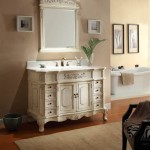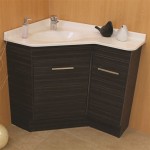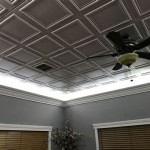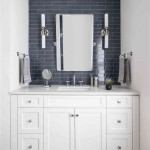The Comprehensive Guide to Bathroom Vanity Repainting Costs
Repainting a bathroom vanity is a common home improvement project undertaken for aesthetic enhancement, increasing property value, or simply refreshing the appearance of a worn or outdated fixture. Understanding the costs associated with this project is crucial for budgeting and making informed decisions about whether to undertake it as a DIY endeavor or hire a professional.
The total cost to repaint a bathroom vanity is influenced by a multitude of factors, including the vanity's size and material, the complexity of the design, the chosen paint and materials, and whether professional labor is involved. This article provides a detailed breakdown of each contributing factor, offering a comprehensive guide to estimating the expenses involved in repainting a bathroom vanity.
Factors Influencing the Cost: Vanity Size and Material
The size of the vanity is a primary determinant of the overall cost. Larger vanities naturally require more paint, primer, and other materials, increasing the expenditure. Likewise, the material from which the vanity is constructed significantly impacts the preparation needed. Wood vanities, for example, may require sanding, filling, and priming before paint can be applied effectively. Laminate or melamine vanities often necessitate specialized primers and paints designed for adhesion to non-porous surfaces. These specialized materials often carry a higher price tag than standard paint products.
Smaller, single-sink vanities generally require less material and labor, translating to a lower overall cost. Conversely, larger double-sink vanities or custom-built units demand a greater investment in both materials and time. The intricacy of the vanity's design also plays a role. Vanities with intricate carvings, multiple drawers, or decorative molding require more time and skill to prepare and paint, increasing the labor costs if professional services are employed.
Material also affects the level of preparation required. Solid wood vanities, while often more durable, might require meticulous sanding to achieve a smooth, even surface. Damage like dents, scratches, or water stains will need to be addressed before painting, which can add to the overall time and expense. Laminate vanities require a different approach, focusing on creating a surface that the paint can properly adhere to.
Paint, Primer, and Material Costs
The selection of paint, primer, and other materials contributes significantly to the overall expense. High-quality paints generally offer better coverage, durability, and finish compared to cheaper alternatives. While the initial cost may be higher, using premium paints can result in a longer-lasting finish, reducing the need for frequent repainting. The type of paint also matters. Oil-based paints are known for their durability and hard finish, but they require longer drying times and more meticulous cleanup. Latex or acrylic paints are water-based, easier to work with, and offer a wider range of colors, but they may not be as durable as oil-based paints, particularly in a high-moisture environment like a bathroom.
Primer is an essential component of a successful paint job. It helps to create a uniform surface for the paint to adhere to, seals any existing stains or imperfections, and improves the paint's durability. The type of primer required depends on the vanity's material. For wood vanities, a stain-blocking primer is often recommended to prevent tannins from bleeding through the paint. For laminate vanities, an adhesive primer specifically designed for non-porous surfaces is necessary to ensure proper paint adhesion.
Beyond paint and primer, other materials to consider include sandpaper (various grits), wood filler (if needed), caulk, painter's tape, brushes, rollers, drop cloths, and cleaning supplies. The cost of these materials can add up, especially if professional-grade tools and supplies are used. When calculating the budget, it is crucial to account for these often overlooked expenses. The chosen finish, whether matte, satin, semi-gloss, or high-gloss, also impacts the paint cost slightly, as some finishes require more layers for optimal results.
Professional Labor vs. DIY: Weighing the Options
One of the most significant cost factors is whether to hire a professional painter or undertake the project as a DIY endeavor. Engaging a professional painter offers the advantage of expertise, experience, and specialized tools, ensuring a high-quality and long-lasting finish. However, professional labor significantly increases the overall cost.
Professional painters typically charge by the hour or by the project. Hourly rates can vary depending on the painter's experience, location, and the complexity of the job. Project fees are often more predictable, as they provide a fixed cost for the entire undertaking. When obtaining quotes from professional painters, it is essential to inquire about what is included in the price, such as surface preparation, paint and material costs, and cleanup. Some painters may charge extra for additional services, such as removing or replacing hardware.
Opting for a DIY approach can save considerable money on labor costs, but it requires time, effort, and a certain level of skill. Before embarking on a DIY project, it is crucial to assess one's capabilities and consider the potential for errors. Mistakes can lead to a less-than-satisfactory finish, requiring rework and potentially increasing the overall cost in the long run. Furthermore, DIY projects often require an investment in tools and equipment, such as sanders, paint sprayers, and professional-grade brushes, which can offset some of the savings on labor.
The final decision between hiring a professional and DIY depends on individual circumstances, budget constraints, and skill level. If time is a constraint, or if a flawless finish is desired, hiring a professional may be the best option. However, if one is comfortable with DIY projects and has the necessary time and skills, repainting a bathroom vanity can be a cost-effective way to update the bathroom's appearance.
The level of detail required also contributes to the decision. A simple, straightforward vanity with minimal detailing is generally easier for a DIYer to tackle. However, a vanity with intricate carvings or a complex design might necessitate the precision and expertise of a professional painter.
Finally, consider the potential for disruption. Hiring a professional allows minimal disruption to the household, as they can complete the project efficiently and within a set timeframe. A DIY project, on the other hand, may extend over several days or even weeks, depending on available time and the complexity of the task.
Additional Cost Considerations
Beyond the factors already discussed, several other considerations can influence the cost of repainting a bathroom vanity. These include the need for repairs, hardware replacement, and disposal fees. If the vanity has significant damage, such as water damage or rot, repairs may be necessary before painting. These repairs can involve replacing damaged sections of wood, filling cracks and holes, or addressing structural issues. The cost of repairs can vary depending on the extent of the damage and the materials required.
Consider also whether to replace the vanity's hardware, such as knobs, pulls, and hinges. New hardware can significantly enhance the vanity's appearance and complement the new paint color. The cost of hardware can range from inexpensive to high-end, depending on the style, material, and brand. Installing new hardware may require drilling new holes or filling existing ones, which can add to the preparation time and effort.
Disposal fees may also be relevant, particularly if the old vanity is being replaced entirely. Disposing of a large vanity can incur costs associated with landfill fees or recycling charges. Some municipalities offer free bulky waste disposal days, which can help to mitigate these costs. Additionally, consider the cost of potentially renting equipment, like a paint sprayer, if you don't already own one. These rentals can add to the overall project budget.
In summary, accurately estimating the cost of repainting a bathroom vanity requires careful consideration of several factors, including the vanity's size and material, the type of paint and primer, the choice between professional labor and DIY, and any additional costs associated with repairs, hardware replacement, or disposal. By thoroughly evaluating these factors, homeowners can make informed decisions about budgeting and completing this common home improvement project. Preparation and careful planning, irrespective of whether it is a DIY or professional project, are key to containing the cost.

Fixr Com Cost To Paint A Bathroom Average Small

How Much It Really Costs To Have A Bathroom Painted Beautifully
.jpg?strip=all)
Painting A Bathroom Vanity Again Dream Green Diy

How To Paint A Bathroom Vanity Secrets For Perfect Finish

How To Paint Bathroom Cabinets Without Sanding 8 Vital Steps Grace In My Space
.jpg?strip=all)
Painting A Bathroom Vanity Again Dream Green Diy

How To Paint A Bathroom Vanity

Painting Bathroom Cabinets Nq Property Care

How To Paint A Bathroom Vanity Angela Marie Made

I Painted Our Wooden Bathroom Vanity What Learned Diy Tips Before Afters
Related Posts







